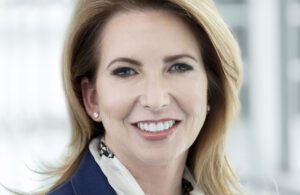
Hologic
(NYSE: HOLX)
CFO Karleen Oberton had some tough words for ax-dropping executives following recent layoffs in the medtech industry and beyond.
In an interview with the Wall Street Journal, Oberton and Hologic CEO Steve MacMillan — who together rode a wave of “COVID cash” from the company’s diagnostics business during the pandemic — discussed how they kept employment steady even as test sales slowed.
The Hologic’s leadership team formed its “philosophy that mass layoffs are a failure of leadership” even before the pandemic, Oberton said.
With nearly $4.9 billion in annual sales, Hologic is the world’s 26th-largest medical device manufacturer, according to Medical Design & Outsourcing‘s Medtech Big 100 ranking by revenue.
That Medtech Big 100 ranking also tracks employment over time. Hologic reported 6,478 full-time employees in September 2019, a figure that dropped to 5,814 by September 2020 as COVID emerged and spread.
Full-time employment at Hologic bounced back and beyond to 6,705 in 2021, 6,944 in 2022 and 6,990 in September 2023, the company’s most recently completed fiscal year.
Oberton and MacMillan offered some insights into their labor strategy, including redeployment of employees from slower parts of the business, big bonuses for the rank-and-file and the use of temporary contractors to meet peak demand.
“Managers are told to question the need for every new hire, redeploy positions to keep compensation budgets from growing, and find savings to offset staff additions,” the Wall Street Journal reported. “When employees leave, positions aren’t necessarily backfilled. Instead, managers ask whether another part of the business needs the position more than the department losing it.”
MacMillan is quoted on performance management as saying, “The simple question we ask everyone is, ‘OK, you want to add someone, what’s the least productive person on your team doing, and what if you instead replace the least productive person with this new person?’ Then it becomes head-count-neutral.”
However, that approach can leave workers feeling overworked — and looking to the exit.
“There will always be people that feel they’re being asked to do more,” MacMillan told the publication. “That raises two questions: Are they the best person for the job? Or do they have too much work? It can sound harsh but often your best performers keep stepping up and are willing to take on more.”
Another trick that could be useful to other device manufacturers: Hologic cut down on emergency calls from customers with equipment problems by analyzing data to predict when that equipment should be proactively serviced.
Read more: Layoffs in medtech: These companies recently reduced their workforce